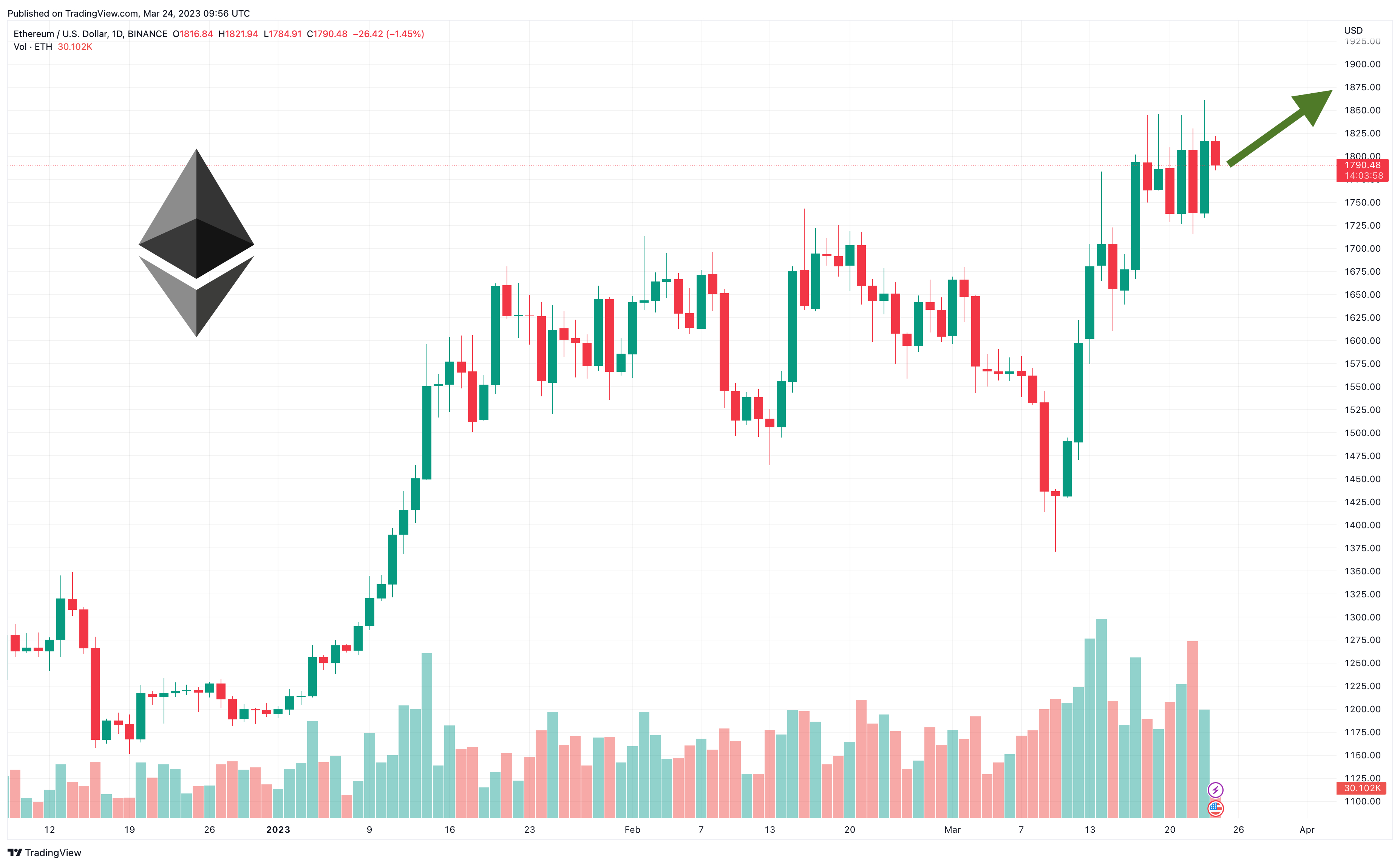Resumption Of U.S. And China Trade Discussions: A Path To Resolution?

Table of Contents
Historical Context of U.S.-China Trade Tensions
Understanding the current state of U.S.-China trade relations requires examining the historical context. The relationship has been marked by periods of cooperation and intense conflict, culminating in the recent trade war.
- 2018 trade war initiation and tariff increases: The Trump administration initiated a trade war in 2018, imposing tariffs on hundreds of billions of dollars worth of Chinese goods, citing concerns over unfair trade practices, intellectual property theft, and forced technology transfer. China retaliated with its own tariffs, significantly impacting global trade. This period marked a significant escalation in U.S.-China trade negotiations.
- "Phase One" trade deal and its limitations: In early 2020, the two countries signed a "Phase One" trade deal, which involved China committing to purchase more U.S. goods and services. However, this agreement was limited in scope and failed to address many of the underlying structural issues fueling the trade conflict. The impact of this limited agreement on overall U.S.-China trade relations remains a subject of ongoing debate.
- Impact of the COVID-19 pandemic on bilateral trade: The COVID-19 pandemic further complicated U.S.-China trade relations, disrupting global supply chains and exacerbating existing tensions. The pandemic highlighted the interdependence of the two economies while simultaneously increasing anxieties about reliance on a single supplier for critical goods. This significantly influenced subsequent trade negotiations.
- Continued disagreements over intellectual property rights, technology transfer, and market access: Deep-seated disagreements persist regarding intellectual property rights protection, forced technology transfer demands from Chinese companies, and the lack of fair market access for U.S. businesses in China. These issues continue to be major obstacles in achieving a comprehensive trade agreement. The lack of progress on these core issues is a significant challenge in improving U.S.-China trade relations.
Key Issues on the Table in Current Discussions
The current trade discussions aim to address several critical issues that have plagued the relationship for years. Successfully navigating these complexities is vital for improving U.S.-China trade relations.
- Tariffs and their potential reduction or removal: The high tariffs imposed during the trade war remain a significant barrier to trade. Their reduction or elimination is a key demand from both sides, although the timing and scope of any such reductions remain contentious. The removal of tariffs is a crucial step toward improved U.S.-China trade relations.
- Concerns regarding China's state-sponsored subsidies and unfair trade practices: The U.S. continues to express concerns about China's use of state-sponsored subsidies to support domestic industries, giving them an unfair advantage in the global marketplace. Addressing these concerns requires a significant commitment from China to ensure fair competition. These practices have historically been a significant impediment to better U.S.-China trade relations.
- Access to the Chinese market for U.S. businesses: U.S. businesses face significant hurdles in accessing the Chinese market, including regulatory barriers, discriminatory practices, and difficulties in protecting intellectual property. Improving market access is crucial for fostering a more balanced trade relationship. This improved market access is essential for more stable and mutually beneficial U.S.-China trade relations.
- Intellectual property protection and technology transfer issues: The theft of intellectual property and forced technology transfer remain major sticking points. The U.S. is seeking stronger protections for its intellectual property in China, including stricter enforcement of existing laws. These issues are central to the long-term health of U.S.-China trade relations.
- The role of the World Trade Organization (WTO) in resolving disputes: The WTO's role in resolving trade disputes is also a point of contention. Both countries need to agree on mechanisms for resolving future disputes in a fair and efficient manner. The WTO's effectiveness in mediating disputes is a key factor in the future of U.S.-China trade relations.
Potential Pathways to Resolution: Opportunities and Challenges
Several potential scenarios could emerge from the ongoing trade discussions:
- A comprehensive trade agreement addressing all major concerns: This ideal scenario would involve a comprehensive agreement that tackles all the major issues, creating a more stable and predictable trade relationship. However, achieving such an agreement would require significant compromises from both sides.
- A phased approach with incremental progress on specific issues: A more realistic approach might involve a phased implementation, addressing specific issues sequentially. This approach could build trust and momentum, leading to a more comprehensive agreement over time.
- A continuation of the status quo, with ongoing tensions: This scenario represents a failure to reach a meaningful agreement, leading to continued uncertainty and potential further escalation of trade tensions.
- The influence of domestic political pressures in both countries: Domestic political pressures in both the U.S. and China could significantly influence the outcome of the negotiations. The need for compromise may be challenged by domestic political realities.
- The role of other global powers in shaping the outcome: Other global powers, such as the European Union, may also play a role in shaping the outcome of the negotiations, either directly or indirectly.
The Role of Technology and Supply Chains
The ongoing tensions between the U.S. and China extend beyond tariffs and market access to encompass broader geopolitical considerations, particularly concerning technology and supply chains.
- Concerns about reliance on China for key technologies and goods: The U.S. has expressed concerns about its reliance on China for key technologies and essential goods, leading to efforts to diversify supply chains and reduce dependence.
- Efforts to diversify supply chains away from China: The U.S. and its allies are actively pursuing strategies to diversify their supply chains, reducing their reliance on Chinese manufacturing and technology. This "decoupling" effort presents both opportunities and challenges.
- The impact of these efforts on global trade and economic stability: These efforts to reshape global supply chains will have significant implications for global trade and economic stability, potentially increasing costs and disrupting established patterns of trade.
Conclusion
The resumption of U.S.-China trade discussions presents both significant challenges and opportunities. Successfully navigating these complexities is crucial for achieving a stable and mutually beneficial trade relationship. The historical baggage of the trade war, coupled with deep-seated structural issues, necessitates a nuanced and comprehensive approach. While a comprehensive agreement remains a desirable outcome, a phased approach addressing key issues incrementally might prove more realistic. Understanding the interplay of domestic politics and the involvement of other global players is essential in assessing the potential pathways toward resolution. The future of U.S.-China trade relations hangs in the balance. Understanding the complexities of these ongoing negotiations is crucial for businesses and policymakers alike. Stay informed about developments in U.S.-China trade relations to navigate this critical juncture in the global economy. Further research on the specifics of U.S.-China trade agreements and ongoing dialogues is recommended to fully grasp the implications of these negotiations.

Featured Posts
-
 Xrp Price Surge Impact Of Pro Shares Upcoming Etf Launch
May 08, 2025
Xrp Price Surge Impact Of Pro Shares Upcoming Etf Launch
May 08, 2025 -
 67 M Ethereum Liquidation Event Analyzing The Markets Future
May 08, 2025
67 M Ethereum Liquidation Event Analyzing The Markets Future
May 08, 2025 -
 Arsenal Psg Macini Sifresiz Canli Izlemenin Yollari
May 08, 2025
Arsenal Psg Macini Sifresiz Canli Izlemenin Yollari
May 08, 2025 -
 Uber Kenya Boosts Customer Loyalty With Cashback Increases Driver And Courier Earnings
May 08, 2025
Uber Kenya Boosts Customer Loyalty With Cashback Increases Driver And Courier Earnings
May 08, 2025 -
 Ethereum Price Breaks Through Resistance Level 2 000 Next Target
May 08, 2025
Ethereum Price Breaks Through Resistance Level 2 000 Next Target
May 08, 2025
